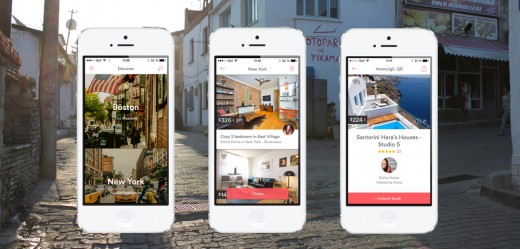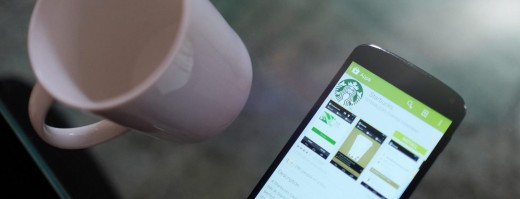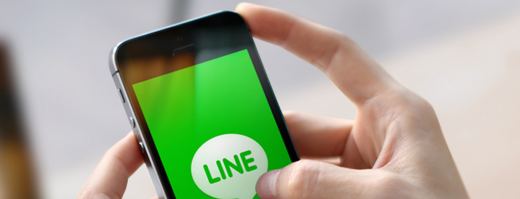| This post was brought to you by CM Telecom, a leading global mobile service company for messaging and payments. |  |
Consider for a moment the idea that by 2016, 2 billion global citizens will be tilting their necks down to learn, play and produce with their smartphones (according to eMarketer). They are the both the creators and consumers, the buyers and the sellers. And they have information coming at them from every which way, meaning it is time to have your brand stand out above the notification noise.
In-app messaging is an obvious brand-building tool for the ability to share a direct, personalized message. However it does need to be implemented and executed with expertise. If not done well, this tool can seem obtrusive to the “personal” digital space held in the users’ hot little hand.
A 2014 comScore white paper, “The U.S. Mobile App Report” reported that 52 percent of all digital media usage in the US between March 2013 and June 2014 was spent using mobile apps. Such mobile apps account for an average of seven out of eight minutes of media consumption.

However, smartphone users are not downloading new apps at an encouraging rate. More than 60 percent of adult smartphone users downloaded zero apps on average in a month (yes, you read that right. zero.) Around 42 percent of all app usage is spent on the mobile user’s most used app, and three out of every four minutes spent using mobile apps is spent within the top four most used apps.
Basically, for major screen time, your app needs to be relevant. While it may never knockout Facebook (the app with the highest share of time spent across all age groups 18-55+), it can join the home screen and score big with interaction.
While users are constantly on digital devices, there is a practical limit to how many apps they interact with and how much information can be consumed. Brands cannot and should not wait for the user to search out the information; brands need to place it in front of the current and prospective consumer’s eyes with an easy call to action baked into a clean, simple interface.
First things first, your brand’s app needs to be on the user’s smartphone to be able to offer wonderful in-app messaging. Ensure the app adds value to the user’s experience with your brand and incentivize downloads.
A mobile messaging mix is then encouraged to involve both in-app notifications as well as push notifications (news flashes that pop-up on the home screen) and SMS messaging tactics and the older more tried-and-trusted push messaging. Use is dependent on the situation and message to be communicated. Leveraging app analytics can help you see what sort of messaging users are opening and responding to.
Implementing this technology into your software is surprisingly easy. Companies such as CM Telecom offer services that allow push campaigns to be managed simply by sending text to an email address. What if someone didn’t read it? It’s a difficult decision, because to try again could mean you go too far and become intrusive.
Don’t do it and you could lose your audience all together. CM Telecom has an SMS backup service that will automatically contact your customers via text if the push notification goes unread.
Then follow through on the promise of value with personalized, unique and relevant in-app and push messaging tactics for the user. Look to some of these stories of communicating gone correct.
Parkmobile: Skip the ticket

Parking solution, Parkmobile, has one memorable tagline: parking made simple. The service found in different locations offers an integrated approach to parking issues. The user registers first, then parks their vehicle at meter marked with a bright green Parkmobile sticker.
The driver then enters the zone number listed on the meter and begins to rack up parking minutes, but can easily pay through the app. (Think of all the times when you do not have loose change and this would come in handy!)
Parkmobile sends messages through a SMS Gateway which allows them to automatically message opted-in registered users 15-minutes before the meter runs out so that drivers may avoid a parking ticket by leaving or adding minutes to the running meter.
It works because the information is on a need-to-know basis and one that the majority of users expect and find useful. For Parkmobile this “customer service” enhances retention and use of the service.
Medical Center Haaglanden: A message a day keeps the doctor in play
Guest Service Manager, Patrick Tettero, at the Medical Center Haaglanden (MCH) in the Netherlands had a problem on his hands. At that time, 8 percent of patients—16,000 to 20,000—were not showing up for scheduled appointments. That is a lot of wasted time, energy, prep and staffing for that many no-shows; MCH estimated each no-show appointment cost approximately 152 euros—a huge cost for no care.
Tettero implemented SMS messaging to communicate a reminder to patients three days in advance of their appointment. He saw results in less than a year. In nine months the percentage of no-shows (at the time of implementation was 4.5 percent) was reduced to just over 3 percent.
The result is a win-win for all parties involved; MCH does not waste money and patients have a simple, friendly reminder in their palm that benefits their health.
Airbnb: All those who wander are not lost
Enticing global wanderlust, Airbnb has established itself as premiere booking site for travelers to rent rooms and homes from other people (not companies). Consider it couch surfing with cleaning fees and verified photos and identification information. For these travelers important information needs to be shared, like a booking request has been accepted by the host. This is communicated through an automatic message from Airbnb to the traveler.

Airbnb takes the cake when it comes to in-app communication. In the account section of the dashboard, users may enable both mobile notifications and SMS text messages (only for North America and Europe carriers). Users can keep the updates all within the Airbnb app through the messaging portal for talking with the host—this is optimal for majority of users since contact emails are kept anonymous.
The mix of messaging between people and between the company and its travelers and host ties all parties involved together.
Etsy: Allow the people to talk shop
Etsy’s mobile platform is as equally user friendly, if not easier, than its desktop webpage. Search functionality, purchasing and messaging can all be done straight through the account connected to the account. The in-app messaging functionality is most often used between buyer and seller to overview product details, discuss shipping questions and share details.
This allows for the buyer and seller to form a more personal connection (to emulate the relationship between the two entities say at a farmer’s market or craft show). In-app messaging is a strong tactic for Etsy because it is self-sustaining by way of the users and derives more value for the already engaged user.
Starbucks: Incentivize retention

International coffee franchise, Starbucks, has in-app messaging down to a caffeinated science. Within the Starbucks app users can open coupons and offers that are not so time sensitive that they would be better served by a more demanding push notification.
The move is one to encourage users to open the app (even those non My Starbucks Rewards members) for additional information beyond the coffee stop, for tidbits like music “Pick of the Week.”
Spotify: Sing the Retention Praises
Within the music-streaming mobile and desktop app Spotify has a few different touchpoints for in-app messaging and push notifications. At the bottom of the sidebar is an inbox icon with a green bubble indicating new messages connections have sent to your account. Spotify then also sends push notifications when new songs are added to Spotify-created playlists you follow, such as “Indie Folk for Focus” or artists you follow release a new album.
This two-pronged approach to both user and brand-created notifications encourages both the actively engaged user and latent listener. Such in-app messaging does not just pull users back into the app, it encourages the never leave to a competing service in the first place!
Line@: Queueing up for successful relationships
LINE, the popular Japanese messaging service, now has an app specifically for brands to manage their account. LINE@ is basically an app built specifically for in-app messaging.
 With
the app brands can post native content to display in the feeds of
people who have added the LINE@ account as friend. Brands can also send
messages to all friends with just a couple of clicks. Content like a
large weekend sale or new happy hour time would be useful content to the
user here. You can also chat one-on-one with users.
With
the app brands can post native content to display in the feeds of
people who have added the LINE@ account as friend. Brands can also send
messages to all friends with just a couple of clicks. Content like a
large weekend sale or new happy hour time would be useful content to the
user here. You can also chat one-on-one with users.For example, say your small shop is selling a cute screen-printed tee. The user could message the brand account indicating they want to buy it, you could talk over any questions or details they may want about the product and then direct them to where to remit payment to purchase.
A personal connection and brand awareness between business and user is clear behind the drive of this app.
Wow thats very wonderful I actually have detected a replacement app spotify web
ReplyDeletethis app is nice and that i have started viewing it.Thanks for the assistance and suggesting the matter i'll travel with it.Keep business and writing new article.